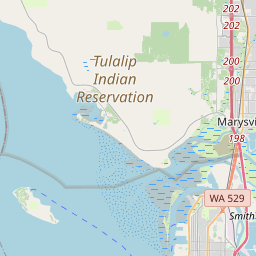Post Office 1939
Historical marker location:






1775: The Second Continental Congress establishes the Constitutional Post to provide postal services in the thirteen American colonies. Benjamin Franklin is appointed as the first Postmaster General.
1792: The Postal Service Act is passed, officially establishing the United States Postal Service as a federal agency. It sets the foundation for the organization and regulation of postal operations.
1847: The introduction of prepaid adhesive postage stamps revolutionizes mail delivery, simplifying the process and promoting efficiency.
1860: The Pony Express, a fast mail delivery service, is launched to transport mail between the eastern and western regions of the United States. It becomes famous for its daring riders and swift delivery.
1863: Free city delivery is introduced, allowing mail to be delivered directly to urban households and businesses rather than being picked up from local post offices.
1864: The Postal Money Order system is established, providing a secure way for people to send money through the mail.
1896: Rural Free Delivery (RFD) is implemented, bringing mail delivery to rural areas for the first time. This service significantly improves communication and connects rural communities to the rest of the country.
1971: The United States Postal Service is reorganized as an independent agency within the federal government, operating as the USPS. It is no longer directly controlled by the Postmaster General.
1974: The USPS introduces the ZIP (Zone Improvement Plan) Code system, which assigns unique codes to geographic areas to improve mail sorting and delivery efficiency.
1997: The USPS launches its website, usps.com, providing online access to postal services, tracking, and information.
2001: Following the 9/11 terrorist attacks, the USPS faces security challenges and undergoes significant changes to enhance mail screening and protection.
2013: The USPS announces the end of Saturday mail delivery for regular letters and reduces delivery to five days a week.
Present: The USPS continues to be a vital service, handling billions of pieces of mail annually and adapting to changes in technology, communication, and the shipping industry. It plays a crucial role in connecting people, facilitating commerce, and serving as a backbone of the American communication infrastructure.
This timeline provides an overview of key milestones in the history of the USPS, which has played a crucial role in facilitating communication and connecting communities throughout the United States for over two centuries.
More history nearby
The Olympic National Park, located on the Olympic Peninsula, is home to one of the few temperate rainforests in the world, with over 12 feet of annual rainfall in some areas.
In the late 18th century, the area was explored by European fur traders and explorers. The first recorded European to visit the islands was Captain George Vancouver in 1792. Subsequently, the area became an important trading post for both British and American ships that were involved in the lucrative fur trade.
In the mid-19th century, the islands began to be settled by non-native settlers. The Donation Land Claim Act of 1850 and the Homestead Act of 1862 encouraged settlers to move to the islands by offering them free land. Whidbey Island became home to farmers, loggers, and fishermen, with towns such as Coupeville and Oak Harbor developing as trade and transportation centers.
During World War II, Island County played a significant role as it was the location of several military installations, including the Naval Air Station Whidbey Island and the Fort Casey and Fort Ebey coastal defense batteries. These installations brought a large number of military personnel and their families to the area and had a lasting impact on the local economy.
Today, Island County has a diverse economy that relies on a variety of industries, including agriculture, tourism, military, and technology. The area is known for its picturesque landscapes, charming small towns, and outdoor recreational opportunities, attracting visitors from near and far. The history of Island County is celebrated and preserved through museums, historical sites, and annual events that honor the region's past.
Island County Timeline
This timeline provides a glimpse into the major events and milestones that have shaped the history of Island County, Washington.
- 1840s - The land that would become Island County is initially explored by European settlers.
- 1853 - Island County is established on December 22 as one of the original counties of the Washington Territory.
- 1873 - Coupeville is chosen as the county seat.
- 1883 - The Great Northern Railway extends its tracks to the county, boosting transportation and economic opportunities.
- 1909 - Deception Pass Bridge is constructed, connecting Whidbey Island to Fidalgo Island.
- 1940s - Naval Air Station Whidbey Island is established, bringing military presence and economic growth to the county.
- 1994 - The Admiralty Head Lighthouse in Ebey's Landing National Historical Reserve is restored and opened to the public.
- 2000s - Island County experiences population growth and increased development, particularly in the southern part of the county.